Four years ago, I upgraded my Home Automation setup from a Raspberry-Pi based system to a more powerful and robust system running on an Intel Nuc. Since then, many things changed in the home automation world, both on the software and hardware side. Still, even some of the early choices have paid out in the end and remained fairly stable.
In this post, I want to share an update on my current Home Assistant setup, including all the hardware I’m currently (still) using. It has been around two years since I last wrote about my setup, and a lot has changed since then - new devices have been released, I’ve experimented with different integrations, and I’ve learned a lot along the way.
Quickly jump to:
What did (not) change?
After several years in this home automation adventure, many things changed. However, some things in my setup also didn’t. Those patterns - the things that apparently work - are a great way to use as input to evaluate new approaches in the future. Things that “stuck” probably did something well. Some first learnings:
- Home Assistant remains my go-to tool: The basis remained the same all these years: It’s still powered by Home Assistant, running locally and on the same Intel Nuc. As a platform, HA became more robust and easy to use, which also translates to more fun developing, maintaining, and using our smart home. I did switch from a customer Docker-based setup to Home Assistant OS running through Proxmox. Updating the various add-ons using Docker Compose did take manual effort, and when life is busy, I only sometimes had the time to do that. While with HA OS, such actions are a simple click of a button (automatic backup included!). The downside is that it’s a single point of failure—however, the pros of efficiently managing the whole system outweigh that.
- Buy the best you can: Often also used as advice for buying cooking ingredients, spending a little more on premium devices worked out well. More expensive is not always better, but paying for features like stability, continuous software updates, and no cloud dependencies is worthwhile. For example, my Hue lights, now often updated through OTA updates in Zigbee2mqtt, are a stable core component of my setup. Or, spending a bit more on motion sensors that work well saves frustration when a sensor drops from the network. Of course, it doesn’t automatically mean that more expensive devices are automatically better, but it is something that I take into account.
- Keep it simple: Home automation is firstmost a hobby. This means trying many things, including hardware and software, and eventually breaking things and starting over. I’m currently at the fifth or so generation of my setup. Still, the opposite is often true for home automation as part of life: it must be stable and run reliably. Reducing the number of vendors (e.g., for lights) and ensuring every automation fulfills a need was key to finding a good balance there.
- Automate a lot, prepare for the exception: Currently, the number of buttons, dimmers, and switches in my house has dramatically reduced. Most lights work automatically based on motion sensors, light measurements, and time of day. No need to dim lights, start a scene or flip a switch. HA ensures that lights go on, dim during the evening and that our living room transitions from “working lights” to a colorful scene in the evening. Still, our mobile dashboard has a page with “kill switches” to turn off automations and disable specific automatic transitions. There is always an edge case that you cannot prepare for. A simple switch to turn off a “smart” feature can save the day.
These learnings all resulted in a new (or are the result of?) set of hardware that I’m currently using. The next few sections go more into detail on these choices.
Controllers
The “controller” is the central hub of my system. Years ago, I started with a single Raspberry Pi but, after a while, switched to a more powerful machine with a dedicated SSD. Since then, the hardware has been stable; I’m still using the same device, though the software has changed. It’s quite an investment compared to a Pi, but the flexibility and the additional power does benefit in the long run.
My first setup using the Nuc used Docker compose but since then I’ve switched to Home Assistant OS. While the Docker compose setup worked quite well, the ability to update add-ons easily from HA makes maintenance less of a hassle. By using Proxmox to run a virtual machine for Home Assistant OS I retain the flexibility to add additional services later on the same device.
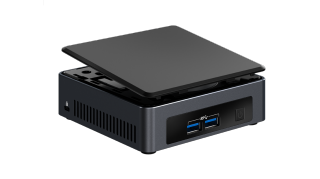
Intel NUC
The main controller of the system. I use Proxmox to run a virtual machine on which I installed Home Assistant OS. By using Proxmox, I have the flexibility to add additional services later on the same machine. All the HA-related services run as add-ons in Home Assistant; this makes managing them very easy.
Using a Zigbee stick in combination with Zigbee2mqtt gives full flexibility in using smart home devices. The Nuc, therefore, also acts as my main hub for the Zigbee network.
Consisting of:
- Intel NUC8i5BEK Bean Canyon
- Samsung SSD 970 EVO Plus 250 GB
- HyperX Impact 16GB DDR4 2666MHz
- Sonoff Zigbee 3.0 Gateway based on EFR32MG21
- USB 3.0 cable to extend the Zigbee radio
- USB-to-serial P1 Cable for energy monitoring
Pros: Powerfull, runs all your services on one device. Home Assistant is more responsive, especially with a large network of devices. Can also run other services.
Cons: A lot more expensive than a single Pi. Higher learning curve to set up.
For more information about the Intel NUC see any of the following links:
HardwareSoftwareHeating
Home automation needs inputs (sensors) and outputs (devices). The lights part of my house is fairly covered, but other exciting ways exist to actuate parts of your house. Heating is one of these and can increase comfort and optimize energy use actively.
This part of my home automation adventure is still limited, but I plan to improve it gradually over time.
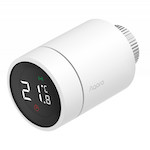
Aqara Smart Radiator Thermostat E1
I wanted to control a single radiator without requiring a cloud-based setup. The Aqara radiator was a great candidate due to its compatibility with Zigbee2mqtt, availability, and relatively sleek design.
Connecting this device was not the easiest, and I encountered a few network drops. It’s a great device on paper, but more testing is required for the final verdict.
Pros: Nice design. Compatible with many radiators; a few adapters are supplied in the box.
Cons: I am still testing this device and encountered some connection problems. Based on your heating system, you might also need to be able to turn on your heating system itself (this device just controls a valve). Some features are not usable through Zigbee2mqtt (or at least not easily).
For more information about the Aqara Smart Radiator Thermostat E1 see any of the following links:
HardwareSoftwareLights
Lights are my smart home’s main ‘output’ and are controlled by various inputs. Using a Zigbee stick in combination with Zigbee2mqtt results in being not limited to a single brand. I have tested multiple brands (Hue, Ikea, OSRAM, Innr), and the lights I use the most are described here.
I started out originally with a few Hue lamps combined with cheaper Ikea bulbs. Over the years, I’ve slowly moved to using mostly Hue lights. Their light quality, ease of use, availabiltiy of fimrware updates, and connectivity are great quality-of-life upgrades. They are pricier, though, so watching out for sales is recommended.
I’m still using a few Ikea and Innr lights in places, but as most of the lights are Hue, I’ll focus on those here. If you prefer to spend a little bit less on your lights, the Ikea/Innr bulbs are a good alternative.
Why not smart switches? There is typically a debate between using smart lights and smart switches. Smart switches (e.g., Shelly devices) allow to re-use existing wall switches, are typically cheaper if you control more than one bulb, and, if wifi based, do not need a hub. However, my main selling point for smart lights is the option to change brightness, color, and light temperature per bulb. This is a feature I would not want to live without. Smart switches can dim, but you need smart lights for more features like changing colors. You can, of course, use both, but with smart enough automations, you would not need many switches.
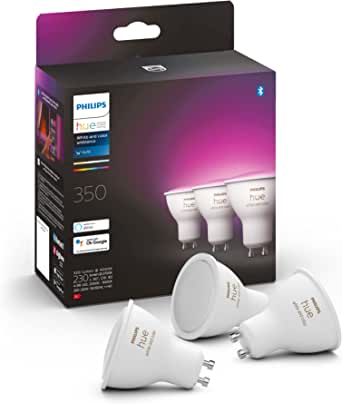
Philips Hue Color GU10
Although a bit expensive, these bulbs’ overall (light) quality is excellent, and they have a great range of colors (compared to other lights I’ve tested). I use them to create color highlights and scenes. Connecting them is typically very easy with a Hue Dimmer Switch, and their meshing capability works well. I went with the cheaper White Ambiance variant for larger areas that do not need colors.
Pros: Very good color range. Great dimming capabilities. No problems with faulty bulbs (so far). Easy to connect. OTA (updates) through Zigbee2mqtt.
Cons: More expensive than alternatives.
For more information about the Philips Hue Color GU10 see any of the following links:
HardwareSoftware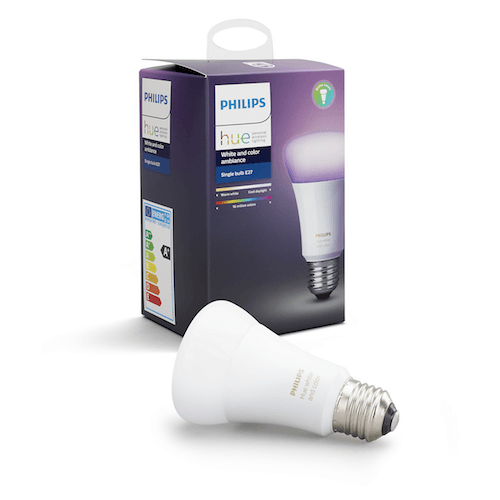
Philips Hue Color E27
Similar to the GU10 variants, but in a different form factor. Although a bit expensive, the overall (light) quality of these bulbs is excellent, and they have a great range of colors (in comparison to other lights I’ve tested). I use them to create color highlights and scenes. Connecting them is typically very easy with a Hue Dimmer Switch, and their meshing capability works well.
Pros: Very good color range. Great dimming capabilities. No problems with faulty bulbs (so far). OTA (updates) through Zigbee2mqtt.
Cons: More expensive than alternatives.
For more information about the Philips Hue Color E27 see any of the following links:
HardwareSoftware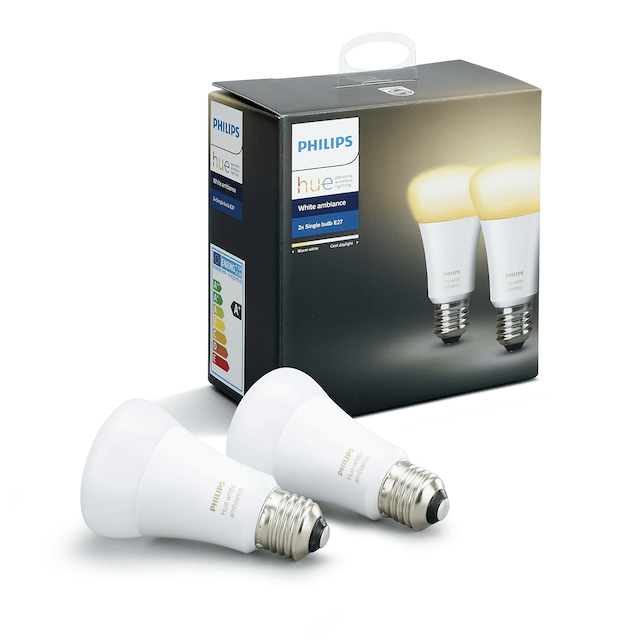
Philips Hue White Ambiance E27
I use these lights as a cheaper alternative to the colored Hue lights. I use them in places where controlling brightness and color temp is sufficient. Excellent dimming quality and the color warmth has the best range in comparison to the other brands I’ve tested.
Pros: Very good temperature range. Great dimming capabilities. No problems with faulty bulbs (so far). OTA (updates) through Zigbee2mqtt.
Cons: More expensive than alternatives.
For more information about the Philips Hue White Ambiance E27 see any of the following links:
HardwareSoftware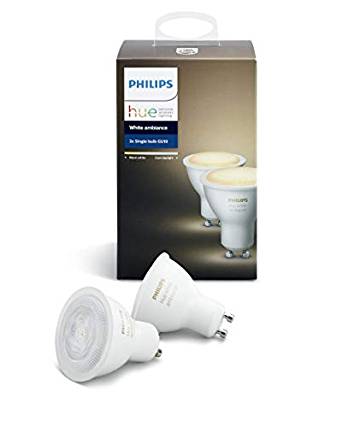
Philips Hue White Ambience GU10
Highest quality GU10 Zigbee lights I found so far. Excellent dimming capabilities (great for night lights) and a wide color temperature range.
Pros: Superb dimming capabilities. Nice color temperature range. OTA (updates) through Zigbee2mqtt.
Cons: More expensive than alternatives.
For more information about the Philips Hue White Ambience GU10 see any of the following links:
HardwareSoftwarePlugs
Smart plugs are an easy way to make dumb devices a bit smarter. For example, I use one to control the charger of my wall tablet and a second one to control my (non-smart) TV.
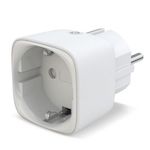
Innr smart plug
I started out with OSRAM plugs. However, one spot in my house needed a smaller form package. The Innr smart plugs offer just that—no fancy features, just a Zigbee-based smart plug that works and doesn’t require a lot of space.
Pros: Good value for your money. Small form factor. Nice design (for a plug).
Cons: No power measurement in this configuration.
For more information about the Innr smart plug see any of the following links:
HardwareSoftware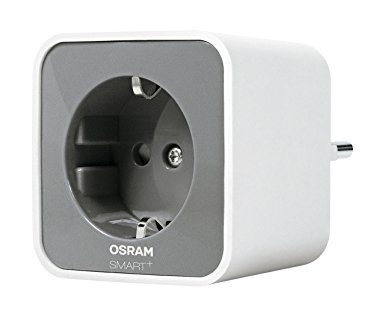
OSRAM Smart+ Plug (Sylvania in the US)
Simple plug that I use for adding power on/off control to non-smart devices. I’ve only tested the EU OSRAM version, in the US this brand is available under the Sylvania name. The OSRAM hub is not required as it connects to Zigbee2mqtt.
Pros: Good value for your money. Good zigbee meshing capabilities.
Cons: No power measurement (at least in Zigbee2mqtt/Deconz). A bit bulky in comparison to others (e.g., Innr).
For more information about the OSRAM Smart+ Plug (Sylvania in the US) see any of the following links:
HardwareSoftwareSensors
Sensors are what transitioned my home from an app powered home to a (aspiring) smart home. Before I had any sensors, lights were controlled by an app (e.g., the Philips Hue app), and everything was manual. Now, with the introduction of these sensors, 95% of my lights are turned on and off automatically. These sensors are also an excellent input for alarm systems.
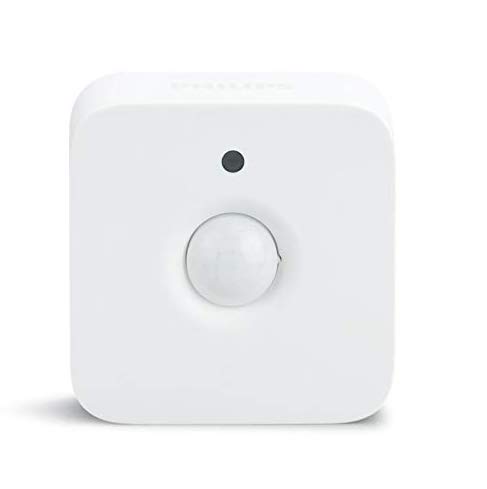
Philips Hue Motion Sensor
The Hue motion sensor is my go-to choice for a motion sensor. It reacts fast, works well in Zigbee2mqtt, and the light sensor is fairly accurate. The temperature sensor is not great, as it can vary quite a bit between devices, but it gives some indication.
Pros: Fast response time. Realiable. Very precise light sensor. Can be installed using a magnet.
Cons: Not the cheapest sensor on the market. Larger than, for example, the Xiaomi motion sensor. Temperature sensor not very accurate.
For more information about the Philips Hue Motion Sensor see any of the following links:
HardwareSoftware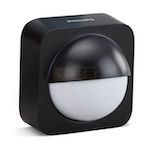
Philips Hue Motion Sensor (Outdoor)
Hue motion sensor in a form factor suitable for outdoor use. One of the few Zigbee sensors available for use in the garden.
Pros: Easy to install in various configurations. Design looks nice. Feels sturdy.
Cons: Not cheap. Very sensitive, I have quite some problems with false positives. The sun affects the temperature sensor and will not be accurate for the ambient temperature.
For more information about the Philips Hue Motion Sensor (Outdoor) see any of the following links:
HardwareSoftwareSeries on Home Automation
This post is part of a series of posts on Home Automation. These posts usually cover a part of my own smart home or a project I worked on. I make heavy use of Home Assistant, Node-RED and AppDaemon to control my home; these posts are examples of this.
Interested in my setup?
Home Automation hardware setupOther posts in this series
Interested in Home Automation, Home Assistant or Node-RED? I have a few other posts that might be of interest:
Automatically turn on tv when streaming to a Chromecast
Quick Node-RED tutorial on automatically turning on a TV when streaming media.
Automatic dark mode for Home Assistant
Quick tutorial on setting up an automatic dark mode for Home Assistant.
Local face recognition for Home Assistant using TensorFlow.js, Part 2: Learning to recognize faces
Second post of my series on face recognition for presence detection in Home Assistant. In this post, I create a face recognition system.
